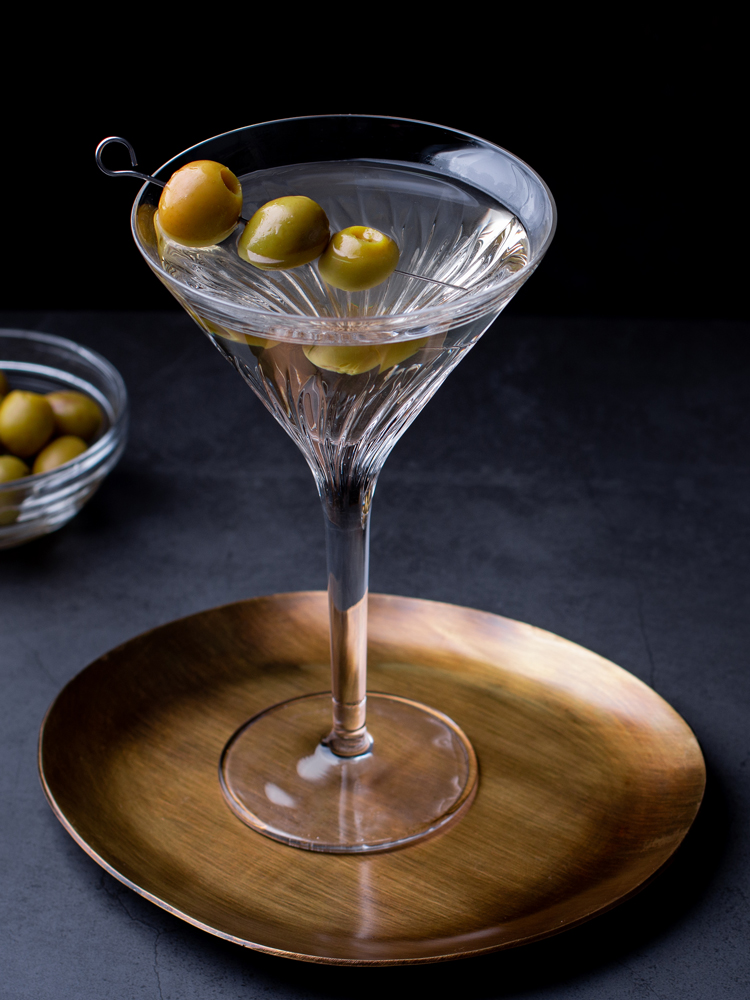
A savoury variation on the classic
2.5 oz gin or vodka
0.5 oz dry vermouth
0.25 to 0.5 oz olive brine
Garnish: 1 or 3 olives on a skewer

2.5 oz gin or vodka
0.5 oz dry vermouth
0.25 to 0.5 oz olive brine
Garnish: 1 or 3 olives on a skewer
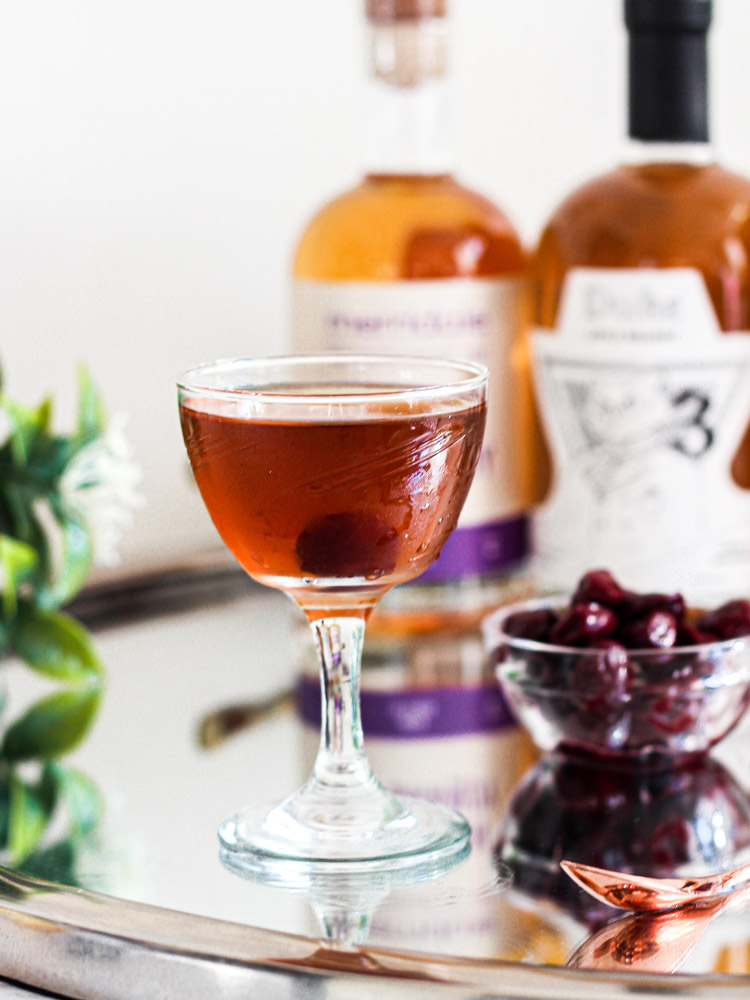
1 oz Alchemist Distiller Duke Apple Brandy
1 oz Merridale XXO Brandy
1 oz Esquimalt Wine Rosso Vermouth
1 barspoon simple syrup (optional; see note)
Garnish: orange zest, cherry
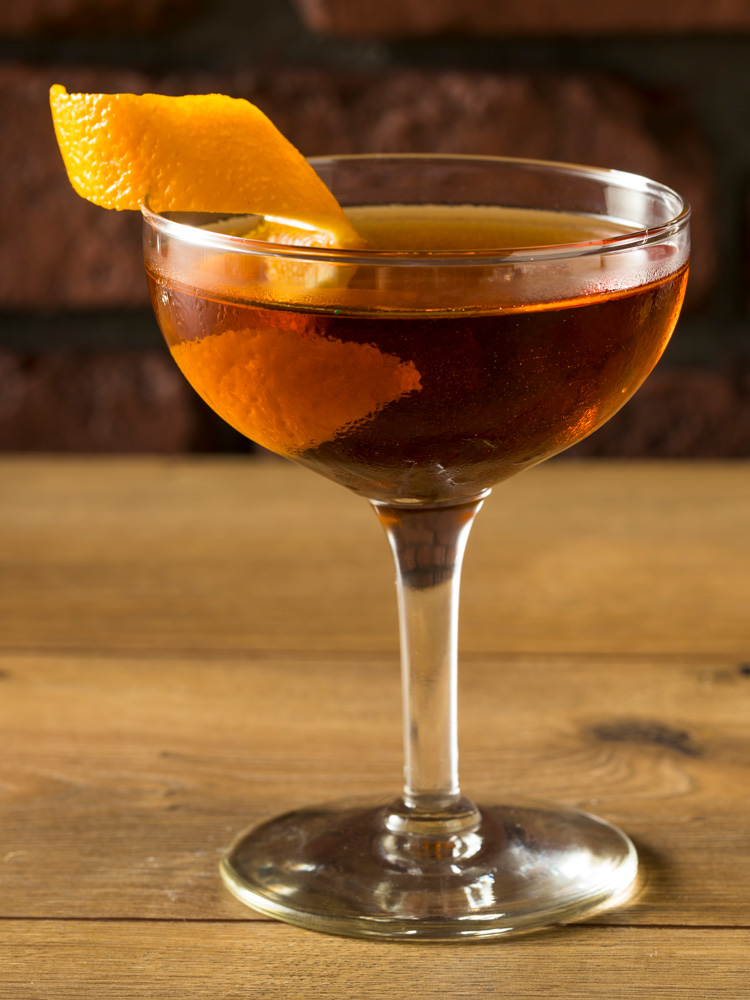
1.5 oz Clase Azul Ultra Aged tequila
1.5 oz Carpano Antica Formula vermouth
2 tsp maraschino liqueur
Garnish: orange zest
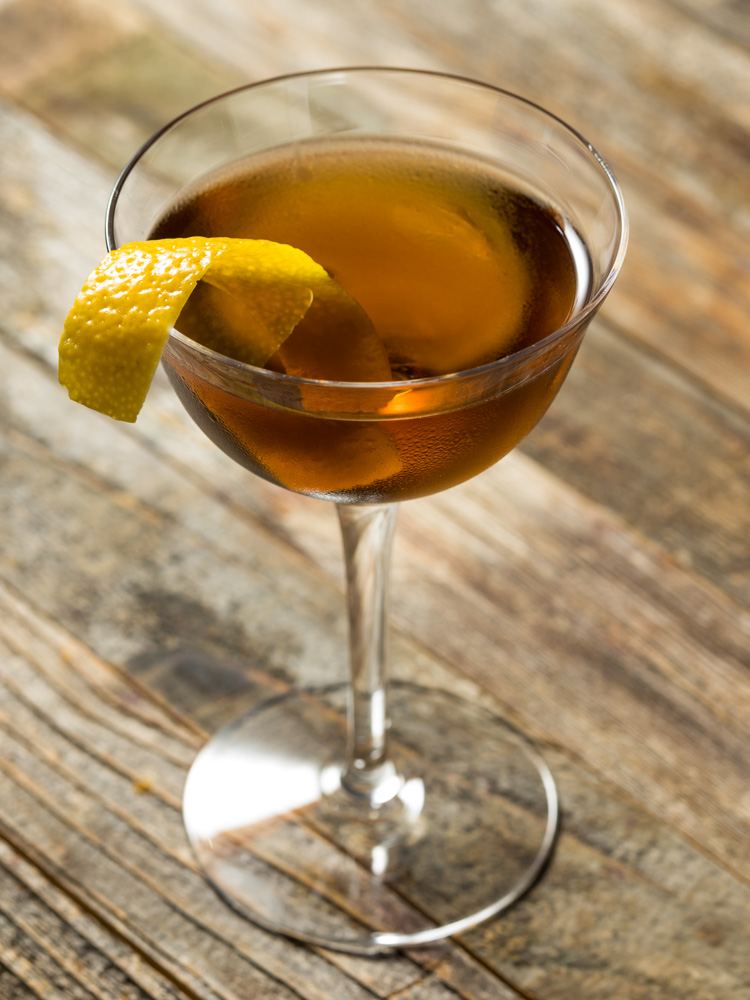
1 oz blended scotch whisky
1 oz sweet vermouth
0.5 oz Bénédictine liqueur
Garnish: lemon peel
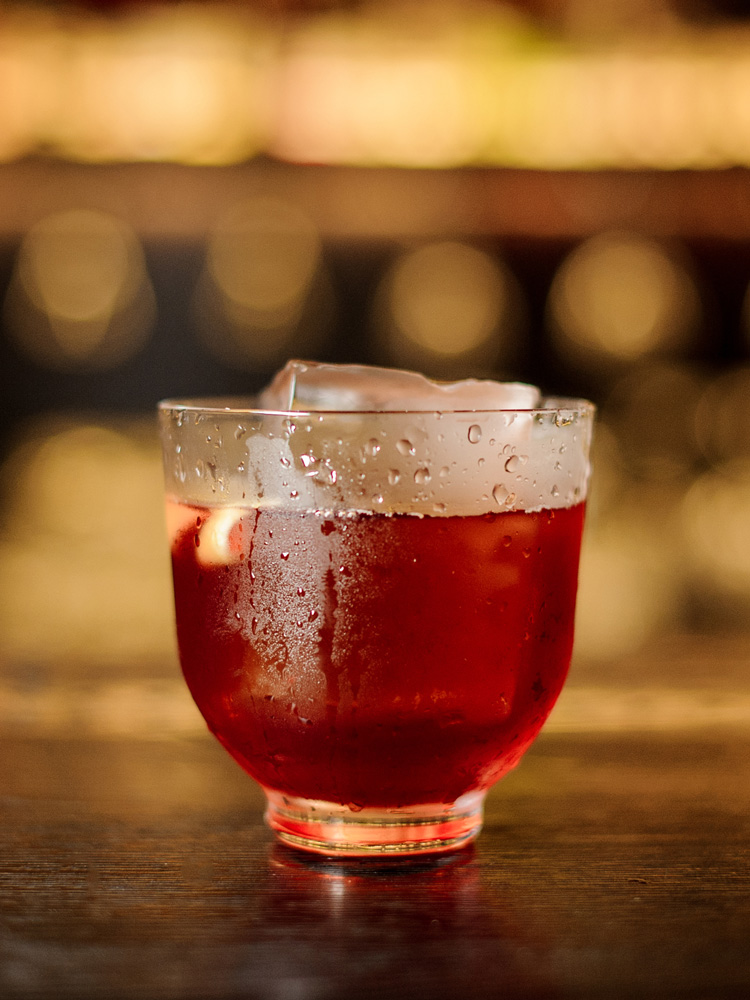
0.75 oz rye whisky
0.75 oz Cognac
0.75 oz sweet vermouth
0.5 oz Bénédictine liqueur
2 dashes Angostura bitters
2 dashes Peychaud’s bitters
Garnish: lemon twist
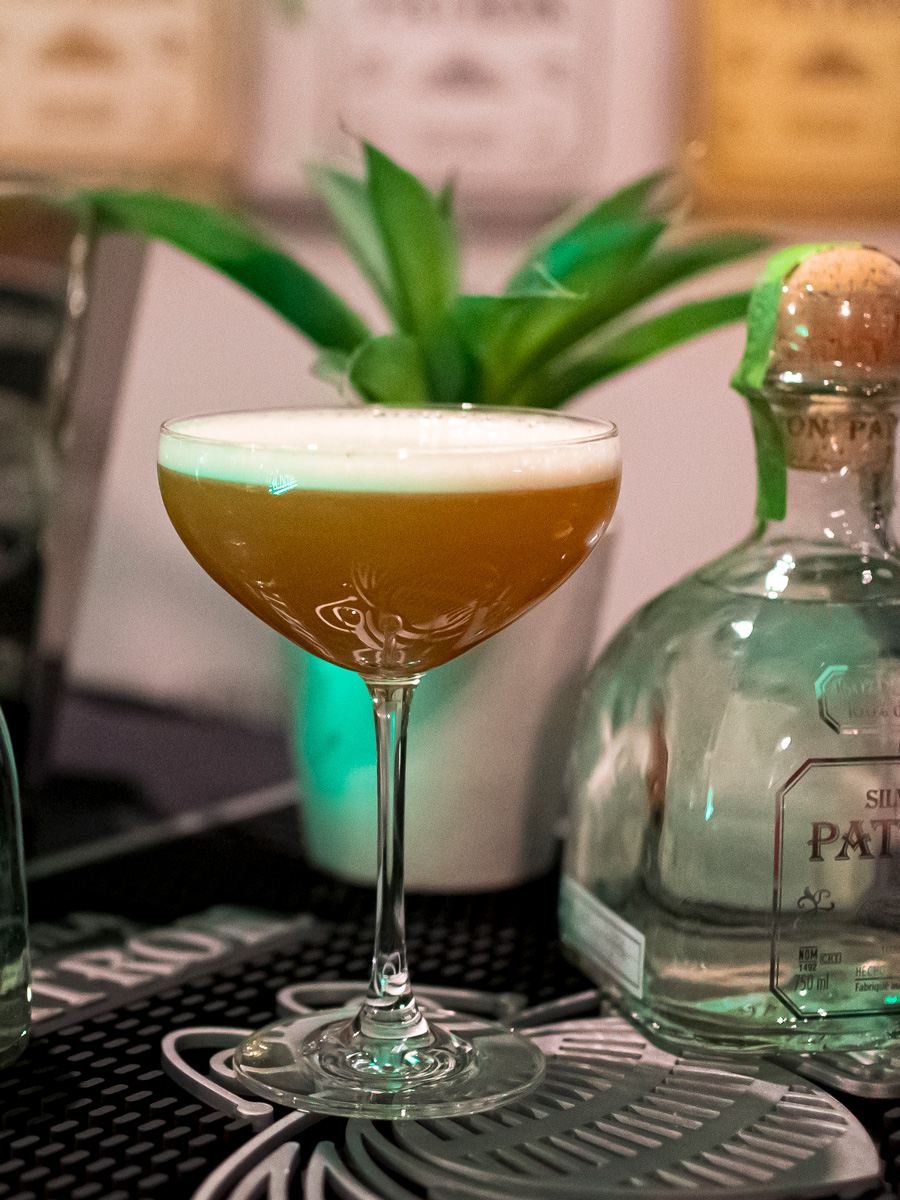
• 1.5 oz Patron Silver
• 0.75 oz Martini Rosso vermouth
• 0.75 tsp amaro (preferably Amaro Lucano)
• 1 oz pineapple juice
• 0.5 oz lime juice,
• 0.5 oz rich simple syrup (2:1)
• Garnish: freshly grated nutmeg
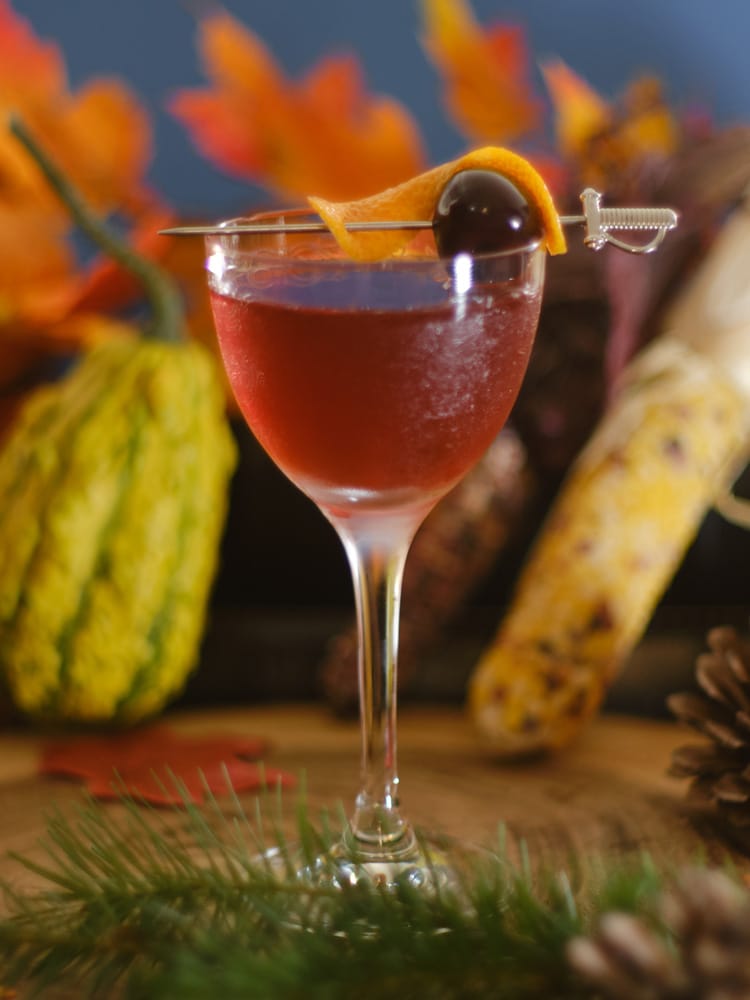
1.5 oz West Coast Spiced Rum
0.75 oz dry vermouth
0.33 oz orange Curaçao
1 barspoon grenadine
Garnish: Orange twist and brandied cherry
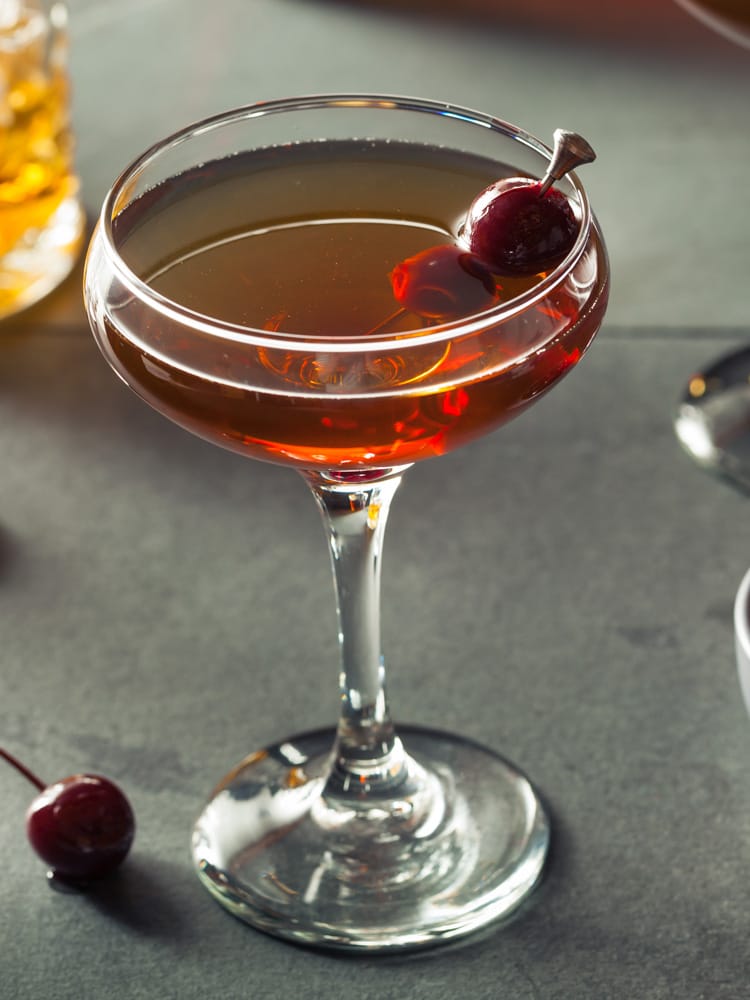
2 oz rye whisky
0.75 oz Bénédictine
0.75 oz sweet vermouth
3 dashes absinthe
3 dashes Peychaud’s bitters
Garnish: 3 brandied cherries
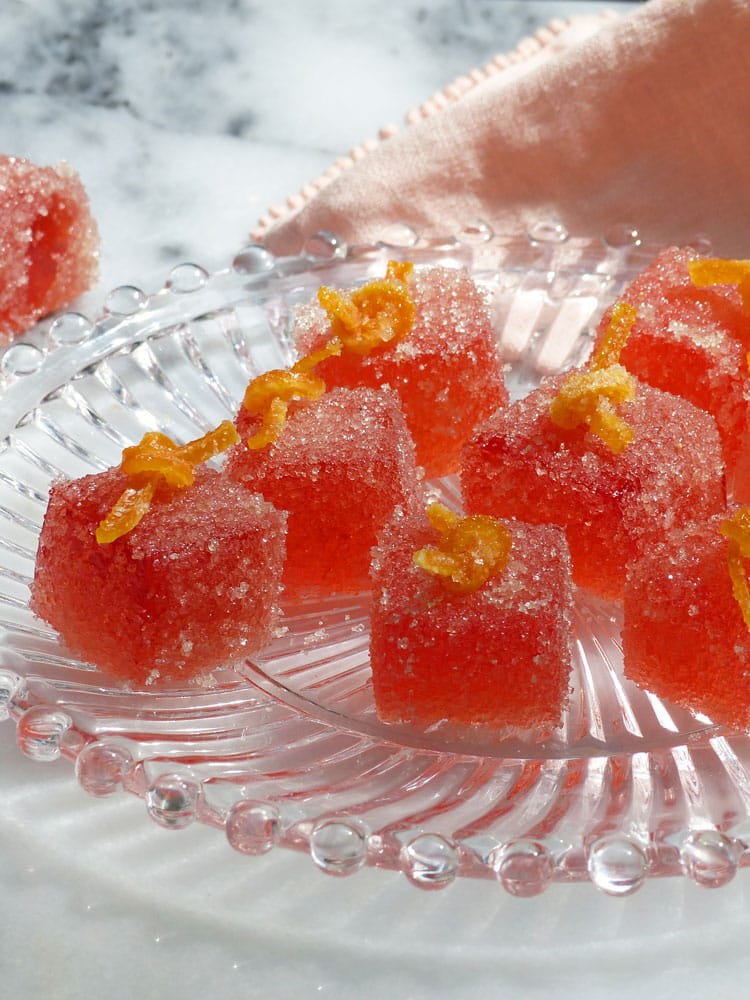
• 1 cup London Dry gin
• 1 cup Campari
• 1 cup sweet vermouth
• 1 cup water
• 4 packets (0.25-ounce each) powdered gelatin
• Garnish: sanding sugar, candied orange zest (optional; recipe below)

• 1 oz brandy
• 1 oz Red Hibiscus Vermouth
• 0.5 oz Sons of Vancouver amaretto
• 1 oz apple cider
• 0.25 oz freshly squeezed lemon juice
• Garnish: Cinnamon stick